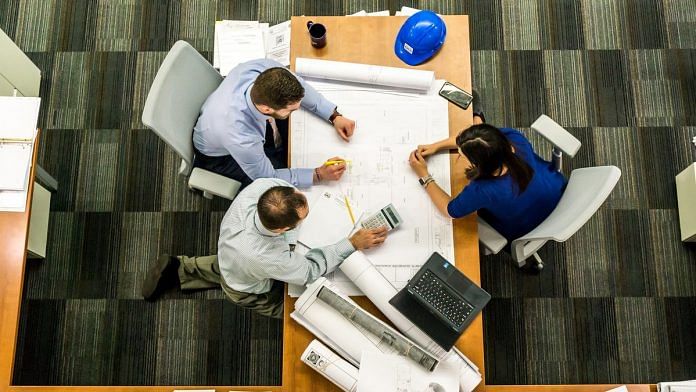In the first few weeks of coronavirus outbreak in China, products like protective masks, hand sanitiser, and even toilet paper, were flying off the shelves of both physical and online stores. But as Italy, Spain, the US, South Korea, Singapore and the UK started to impose lockdowns and transitioned to working from home, there was another thing people began to frantically search the depths of the internet to buy for their homes–the perfect office chair.
The humble office chair is witnessing a belated comeback in people’s fantasies during coronavirus lockdowns. Never before have I valued the ability to swivel around, adjust the height, or lean back on the flexible mesh of an ordinary looking, but well-serving chair.
Working from home is ruining our necks and backs now. The bed is just not that inviting anymore. The office chair is no longer a seat of power. In the lockdown, the chair preserves an important evolutionary leap too. We couldn’t become slouching slops with laptops. Taking care of the spine has also become an important battle to preserve the March of Progress image.
Also read: India’s one lesson from Covid crisis and work-from-home: How to build a real smart city
Missing the office chair more than the office
In a pre-corona time, work-from-home was a blissful idea – a Shangri-La – that held out untold joys of perfect work-life balance. In my mind, at least. Yes, those ridiculous nap pods in a Google office seemed to be a very innovative 21st century idea.
But a few weeks into the lockdown, with full access to my bed, my sofa, even my carpeted floor, I have never treasured a traditional desk and office chair combo more. Like all dreams, this too came to a tragic end. A DIY, “relaxed set up”, seems flexible and fun at first, but it can soon spiral into a host of varied neck, pain, shoulder and wrist pain. As someone with a history of having both scoliosis and carpal tunnel syndrome, I am much too familiar with all these kinds of aches, and now I’m rudely confronted with the merits of all those sitting upright, with legs at a 90 degree angle directives.
An office chair is possibly one piece of furniture where form most definitely always follows function. The ergonomic function of this chair, that sometimes people spend most of their day in, is stuff of serious consideration. Just Google “perfect office chair”, and you’ll know what I mean. But this has always been the case, as a lesson in design history can tell us — from 3000 B.C, when three legged stools with a concave seat tilting forward were created to make the task of hammering easier, to the 1850s when engineers stepped in to demystify the connection between health and comfort and posture and movement.
Also read: After Covid-19, employers will resist work-from-home much less
When comfort became key
Thomas E. Warren’s Centripetal Spring Armchair which debuted in the Great Exhibition in London in 1851 was one such model that was designed to be so comfortable that it was deemed “immoral”. In the Victorian era, it was only an upright posture on a rigid unsupportive seat that was considered refined and acceptable. This kind of logic was followed right till the 1920s, when sitting comfortably was equated with laziness; backless benches for factory workers was a norm.
Thankfully, William Ferris came to the rescue with the Domore chair, which actually did have a backrest and was marketed to prevent hemorrhoids, kidney trouble, constipation, and a whole host of other problems caused by slouching. Future models of the chair even promised to tone one’s abs!
Finally in the 1970s, studies like ergonomics and anthropometrics started to be seen as “chic”. Herman Miller came out with the Ergon Chair that resembles most of the chairs we have in our offices today, and then again in 1994 with Aeron Chair, which introduced the concept of lumbar support and became so important that it can be found everywhere from the London Design Museum to the Museum of Modern Art (MoMa). There was even talk about turning your office chair into a personal gym.
Of course, a lot depended on office hierarchies too. How comfortable your chair signalled your designation too. The armrest was often a key giveaway – could you raise or lower it, at what angle, and to hold coffee, mobile phones or tablet.
The quest to innovate is very much still on, with some rather bizarre offerings like balance ball chairs, ergonomic kneeling chair, or just plain ergonomic office stools. Some offices today are even experimenting with no chairs at all–behold standing desks.
The search by designers and engineers for the perfect one may continue in a post corona world, but in the meantime, I will daydream about my basic but dependable office chair.
Views are personal.







Very impressive article, and educative too. Got to learn many new things. This columnist is surely an avid researcher, so everything she writes should be read with seriousness.
Yes, I am missing not only the office chair but the desk too, with all its ready-to-use electric sockets, room for all things, the laptop, bag, coffee mug, pens and stationery, the landline, the cabinet and the drawers…